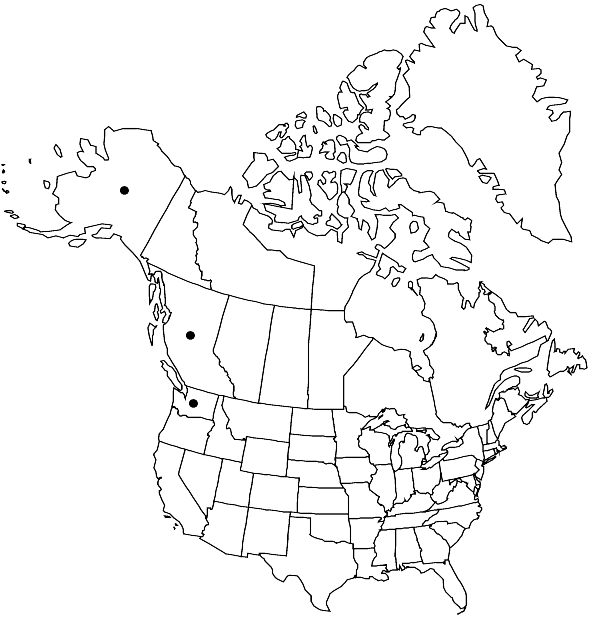Difference between revisions of "Andreaea megistospora"
Bryologist 90: 18, figs. 9–23, 25–28. 1987,.
FNA>Volume Importer |
FNA>Volume Importer |
||
| Line 10: | Line 10: | ||
|name=Andreaea megistospora var. epapillosa | |name=Andreaea megistospora var. epapillosa | ||
|authority=(B. M. Murray) H. A. Crum & L. E. Anderson | |authority=(B. M. Murray) H. A. Crum & L. E. Anderson | ||
| − | }}{{Treatment/ID/Synonym | + | }} {{Treatment/ID/Synonym |
|name=Andreaea megistospora subsp. epapillosa | |name=Andreaea megistospora subsp. epapillosa | ||
|authority=B. M. Murray | |authority=B. M. Murray | ||
| Line 27: | Line 27: | ||
|elevation=low to moderate elevations | |elevation=low to moderate elevations | ||
|distribution=B.C.;Alaska;Wash.;nw Europe. | |distribution=B.C.;Alaska;Wash.;nw Europe. | ||
| − | |discussion=<p>Andreaea megistospora is distinguished from the similar A. rothii by its large spores, and may simply prove to be a large form of the latter. The variety epapillosa is a minor variant commonly occurring in mixture with the typical variety, and doubtfully warrants a name.</p> | + | |discussion=<p><i>Andreaea megistospora</i> is distinguished from the similar <i>A. rothii</i> by its large spores, and may simply prove to be a large form of the latter. The variety epapillosa is a minor variant commonly occurring in mixture with the typical variety, and doubtfully warrants a name.</p> |
|tables= | |tables= | ||
|references= | |references= | ||
| Line 50: | Line 50: | ||
|publication year= | |publication year= | ||
|special status= | |special status= | ||
| − | |source xml=https://jpend@bitbucket.org/aafc-mbb/fna-data-curation.git/src/ | + | |source xml=https://jpend@bitbucket.org/aafc-mbb/fna-data-curation.git/src/8f726806613d60c220dc4493de13607dd3150896/coarse_grained_fna_xml/V27/V27_119.xml |
|genus=Andreaea | |genus=Andreaea | ||
|species=Andreaea megistospora | |species=Andreaea megistospora | ||
Revision as of 16:52, 18 September 2019
Plants brown to black. Leaves erect-spreading or secund, subulate-lanceolate from an ovate base, widest in proximal half of leaf, apex symmetric; costa present, percurrent and sometimes filling the leaf apices, strong but narrow, bulging abaxially, usually reaching the leaf insertion; leaf margins entire or occasionally weakly crenulate; basal laminal cells quadrate to short-rectangular, marginal cells mostly rounded-quadrate, walls weakly pitted-sinuose; medial laminal cells rounded-quadrate, 1-stratose or 2-stratose in patches or completely, lumens rounded; laminal papillae smooth to papillose. Sexual condition cladautoicous or gonioatoicous; perichaetial leaves differentiated, convolute-sheathing. Spores (40–)50–90(–110) µm.
Habitat: Acidic rock
Elevation: low to moderate elevations
Distribution

B.C., Alaska, Wash., nw Europe.
Discussion
Andreaea megistospora is distinguished from the similar A. rothii by its large spores, and may simply prove to be a large form of the latter. The variety epapillosa is a minor variant commonly occurring in mixture with the typical variety, and doubtfully warrants a name.
Selected References
None.